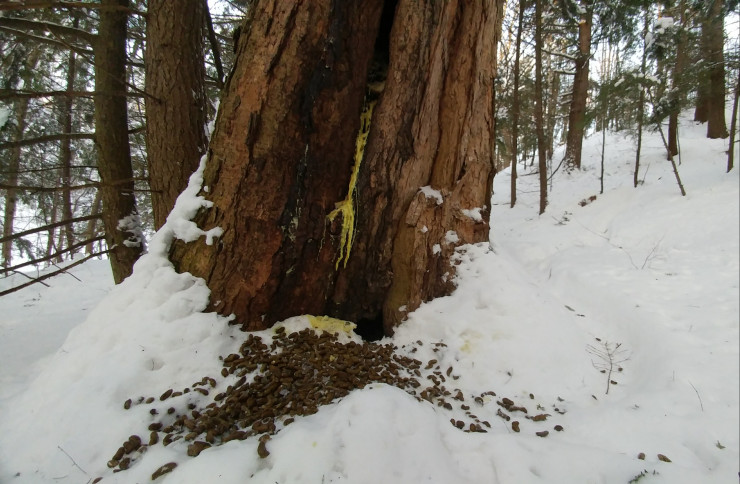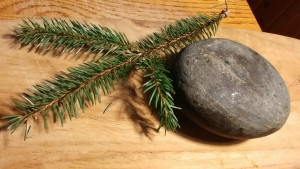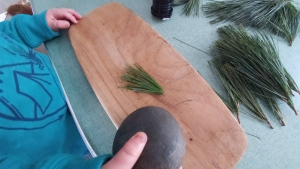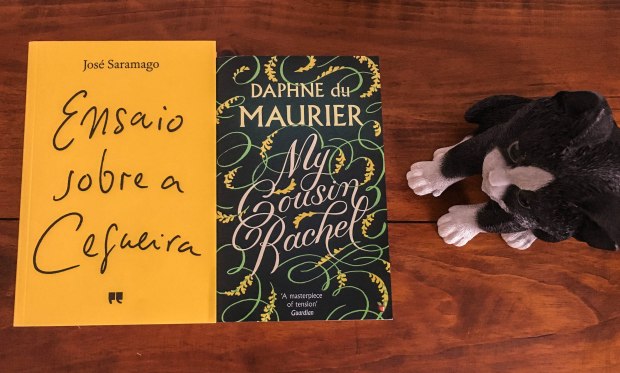This first week of 2018 has been an intimidating one for foraging. Cyclone bombs are smashing against the east coast. Iguanas are falling from trees in Florida. Here in Vermont, it is cold. Damn cold. So cold that porcupine pee freezes before hitting the ground.
 Frozen porcupine urine
Frozen porcupine urine
In times like these it is difficult to muster up the nerve to walk from the front door to the car let alone strap on a pair of snow shoes and trudge through the forest looking for edible plants. All I wanted to do this week was cuddle under a fleecy blanket, sip on some tea, and wait for more civilized weather. So that’s exactly what I did. I decided that for the first week in this year long project, I would go easy on myself and make some “Tree Tea.”
There are two ingredients in Tree Tea: evergreen needles (spruce, hemlock, fir, or pine) and water. Not too complicated. I’ve made this tea probably a hundred times in large batches with a few handfuls of white pine needles thrown into a kettle and brewed over a campfire. When sitting down to write a one serving recipe, I realized that I’ve never measured quantities, kept track of steep time, or gave much consideration to the prepping of the needles. Time to hone in on what makes a good tree tea and stop leaving things up to chance.
First off, let’s look at the different options of evergreen trees. This time of year there are spruce, hemlock (the tree, not the member of the carrot family that will kill you), fir, and pine. Early in the week I braved the cold and collected needles from each species. After thawing out, I soon found myself steeped (pun intended) in tea experimentation. Starting off with Red Spruce, Picea  rubens, I followed an online recipe that called for steeping 4 twigs of needles in one cup of hot water for 10 minutes. The result was pretty darn weak and had no color. For the second batch I had my 2 year old son, who for the purposes of this blog will be affectionately referred to as the “Man Cub,” bruise 1 cup of needles with a stone to help release their juices, placed them in a small pot with just enough water to cover and then brought it to a boil and reduced to a simmer for 10 minutes. This extended exposure to higher heats proved too potent, pulling out too many resins causing for a bitterly unpalatable tea. It probably also destroyed more of the vitamin C. Strike two. I felt like the higher ratio of needles to water from batch #2 was on the right track but I decided to steep rather than simmer. So, I packed a small thermos with 1 cup of bruised spruce needles, poured 2 cups of boiling water over the top, covered and let it steep for 30 minutes. The result was much closer to what I was looking for: full citrus flavor, minimal hints of resin, and an olfactory punch of Christmas, leaving my taste buds feeling light and cheery.
rubens, I followed an online recipe that called for steeping 4 twigs of needles in one cup of hot water for 10 minutes. The result was pretty darn weak and had no color. For the second batch I had my 2 year old son, who for the purposes of this blog will be affectionately referred to as the “Man Cub,” bruise 1 cup of needles with a stone to help release their juices, placed them in a small pot with just enough water to cover and then brought it to a boil and reduced to a simmer for 10 minutes. This extended exposure to higher heats proved too potent, pulling out too many resins causing for a bitterly unpalatable tea. It probably also destroyed more of the vitamin C. Strike two. I felt like the higher ratio of needles to water from batch #2 was on the right track but I decided to steep rather than simmer. So, I packed a small thermos with 1 cup of bruised spruce needles, poured 2 cups of boiling water over the top, covered and let it steep for 30 minutes. The result was much closer to what I was looking for: full citrus flavor, minimal hints of resin, and an olfactory punch of Christmas, leaving my taste buds feeling light and cheery.
I repeated this process with the other three species. White Pine, Pinus strobus, seems to
 The Man Cub enjoyed bruising the pine needles
The Man Cub enjoyed bruising the pine needles
be the needle of choice for many foragers. It was fine. Slightly citrusy but underwhelming. The flavor of the tea may have been affected by the fact that I harvested the needles while it was -12 degrees out and they were desiccated and droopy. I’ll try again once the temps rise and the needles plump up again. The thermos method performed well with this species too.
Eastern Hemlock, Tsuga canadensis, also did best with the thermos, though it probably would have been fine with only 20 minutes of steeping. It was the most subdued of the four teas, but in a good way. Below the surface of citrus notes, there was on undercurrent of something more mellow and comforting. Further experimentation with the delicate flavors of this species is needed.
The Balsam Fir, Albies balsamea, actually did better with the lower needle to water ratio, producing a tea that had poor color, but tasted kind of like watered down Smarties candy. The prolonged thermos steeping method of the spruce proved too much for this resinous evergreen and was nearly undrinkable. The stronger flavors of this species may be better suited elsewhere.
All in all, I feel that this was a positive step towards the perfect cup of “Tree Tea.” Clearly, more experimentation will be needed and many more cups of tea will need to be sipped. I’ll revisit this post once I feel that I have it more dialed in.
Share this:- More





